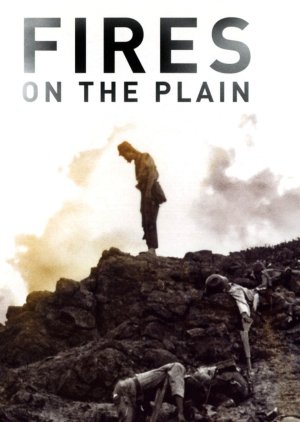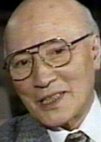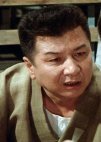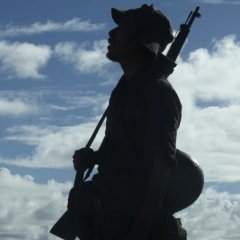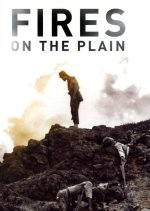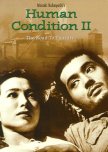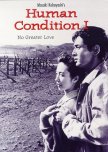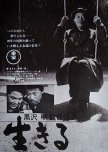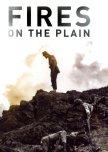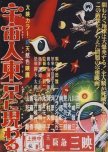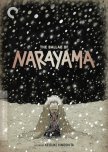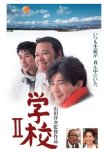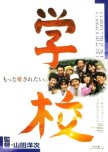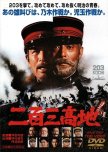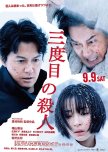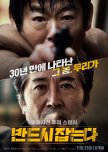# de fans: 84
Reseñas: 2 usuarios
En los días finales de la Segunda Guerra Mundial, fuerzas ocupantes japonesas se enfrenta a la resistencia de la población y la ofensiva estadounidense. El mínimo de soldados japoneses tratan de sobrevivir a través de los horrores de la guerra. Synopsis by WikiDrama Edit Translation
- Español
- magyar / magyar nyelv
- dansk
- Norsk
- Título original: 野火
- También conocida como: Nobi ,
- Director: Ichikawa Kon
- Guionista: Wada Natto
- Géneros: Histórico, Drama, Guerra
Reparto y créditos
- Funakoshi EijiTamuraPapel principal
- Takizawa OsamuYasudaPapel secundario
- Ushio MantaroMaster sergeantPapel secundario
- Mickey CurtisNagamatsuPapel secundario
- Inaba Yoshio Papel secundario
- Hamamura Jun Papel secundario
Reseñas

This review may contain spoilers
"You weren't given a hand grenade for nothing!"
In the waning days of WWII on a small jungle island in the Philippines, the Japanese soldiers found themselves outmanned, outgunned and perilously short on supplies. Fires on the Plain showed the ravages of hunger and despair not only on the human body but on the mind as well.This film was a fascinating look at war through the eyes of PFC Tamura. He found himself in a foreign land with no place to go. He had been to the army hospital to be treated for TB but returned to his company only to be rejected by his squad leader. The company had been decimated by enemy fire, lack of artillery and ammo, but more than anything starvation. The men took turns foraging for yams and bananas to feed themselves and Tamura was too weak to be anything but a drain on already strained resources. He was told if the hospital refused him again to stay there and when the time came to use his grenade on himself. Upon returning to the hospital Tamura found himself with a group of "squatters" kept outside the makeshift hospital presumably left to die. He made quick friendships with two of the squatters. Peace did not last long as the hospital was shelled and those who survived scattered.
As the days dragged on, Tamura found himself wandering alone, knowing he would die. Yet he still filled his canteen, still put one foot in front of the other and continued walking though he had no destination except survival. Along the way he met others and found that everyone was going toward one town with the hope of being evacuated. Poignant scenes of bodies left to lie in the muddy tracks of the road with Tamura refusing to look as he continued on were searingly painful. Even during these dark moments, lighter ones were interspersed as a boot exchange took place one after the other. Before the bedraggled and exhausted men lay a muddy marsh beneath a road on a hill, and a cleared field to cross, dangerous obstacles where the enemy could take advantage. After a disastrous attempt, Tamura found himself alone again wandering up a rocky hill with bodies strewn about like dead ants. Still resigned to dying, he trudged ever onward.
Eventually, he was reunited with two of the squatters and introduced to "monkey meat" and the madness hunger and despair can bring.
Tamura was an affable character rejected for being too weak, yet he never accepted much from anyone and shared with others. He survived when much of his company died and never gave up his humanity as he witnessed humanity in all its varied shades of black and gray around him.
Filmed only 14 years after the end of WWII Fires on the Plain was a critical look at war. These were not glorious, patriotic, die before capture soldiers. The men were starving, defeated and only wanted to go home. The enemy was not only the Americans and Filipino guerillas, but also hunger, desperation and even each other. Many struggled with the will to live and the will to not die. Some wanted to be captured so that they could eat corned beef and others were afraid the Americans or Filipinos would kill them. With American fears of booby-trapped bodies it was a real concern, yet they also showed American medics picking up the wounded after a skirmish. It was also a harsh admittance of stories of cannibalism of both Japanese soldiers and captured foreign soldiers. There was nothing easy about this film.
Funakoshi Eiji gave an understated performance as Tamura as he navigated the roads of death, clinging to his humanity, not even sure where his will to live came from. The skills of the supporting actors varied but most carried off the madness, stoicism, and fear so many of the characters endured. Filmed in black and white the movie had beautiful cinematography. You could feel the claustrophobia of the jungle not knowing where the danger could come from, the muddy paths and rocky ground under bare or near bare feet. The music perfectly reflected the feelings of the characters and the situations they found themselves in. I'm not a film student but I can say this was well made and edited in the eyes of an amateur.
Fires on the Plain showed desperate men and what they would do and would not do to survive when left abandoned without hope or rescue. Though it could be starkly pessimistic in its view of war, tiny rays of hope pierced the gloom on occasion keeping it from being overtly oppressive. Fires on the Plain might not be for everyone but it is a movie I will not soon forget.
8/30/22
¿Te ha parecido útil esta reseña?

An anti-war movie
This is a rare classic and deserves all the applause it has got over the years. This movie is not for the squeamish, there are many moments that are really hard to watch and though there is some humour, it is rather dark. The story is set towards the end of World War II in the Philippines campaign. The Japanese are all but beaten and only Bushido is preventing them from surrender. This movie follows the travels of our hero through the jungle in a desperate struggle to survive. There are some unforgettable poignant moments such as when Tamara throws away his rifle, when he throws away his shoe, when he discovers an unseemly pile in an abandoned village, and when he realizes the origins of 'monkey meat'. The action sequences are few but they are hard-hitting. The actual action is momentary while there is intense buildup. The bombing of the hospital, the crossing of the road, the finale sequence, if the director had wanted he could have pulled off much more action but he chose not to. This is not an action film but a chilling reminder of the actual non-action reality of war.This was made in 1959 but this is a movie that could not be improved upon. Its setting is unique and perspective from the Japanese side ( non-nationalistic and anti-war) is rare. The theatrical Japanese way of acting ( I personally dislike the overacting) is missing here and in fact the acting is remarkably subtle. The cast was so committed to the movie that they starved and did not take care of personal hygiene with the lead actually collapsing after two weeks of self imposed starvation.
¿Te ha parecido útil esta reseña?

